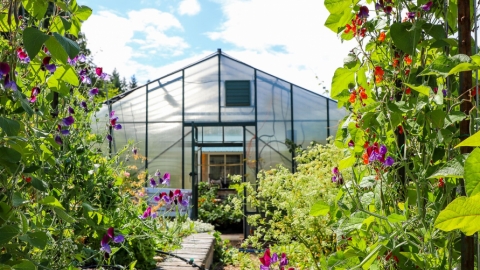Instructions
Ingredients
4 parts peat moss or coir or a mixture of the two products (40 litres)
2 parts sifted homemade compost (20 litres)
1 part high quality worm castings (10 litres)
1 part perlite or vermiculite (10 litres)
Water as needed
Method
Pour loosened* peat moss or coir into a wheelbarrow. Lightly moisten with 1–2 litres of water to eliminate dust. Peat should hold its shape when squeezed.
Add compost, worm castings and perlite to peat or coir. Add additional water at this stage to make soil damp but not wet. (If squeezed in your hand you should not get any moisture release.)
Add moistened and mixed soil mix to pots. Install plants and water thoroughly so the mixture loses moisture from the bottom of the pot. Fertilize only after plants start to grow because the compost and worm castings will offer the initial nutrients needed.
*Peat is often sold in compressed bales but this has to be loosened to fluff it up before measuring. Coir is also sold in compressed bricks and water is added to loosen bricks and fluff it up. Measurements are made after products have been moistened and loosened.
|
Notes The system of using “parts” instead of actual amounts of material is based on the idea that you can mix just enough for the pot or container you need to fill. As long as a consistent-sized container is used for all measurements, the resulting soil will be excellent. For instance, if you are planting an 8-litre (2 gallon) container, you can use a yogurt container as a “part,” and mix 4 yogurt containers of peat moss, 2 yogurt containers of compost, 1 yogurt container of worm castings and 1 yogurt container of perlite. Larger plants like trees, shrubs, figs or lemons may need a heavier potting mix. If you know you are growing trees or large shrubs, substitute half-composted bark such as SEA SOIL for the homemade compost listed. |





